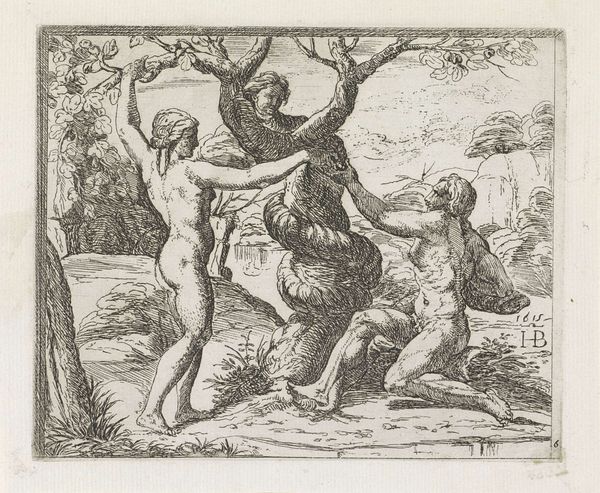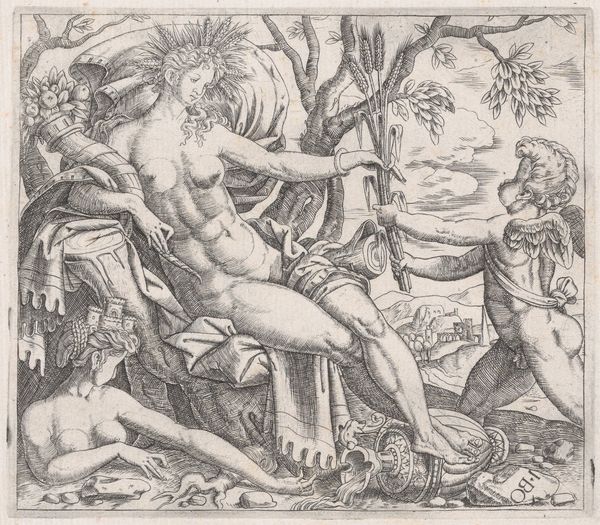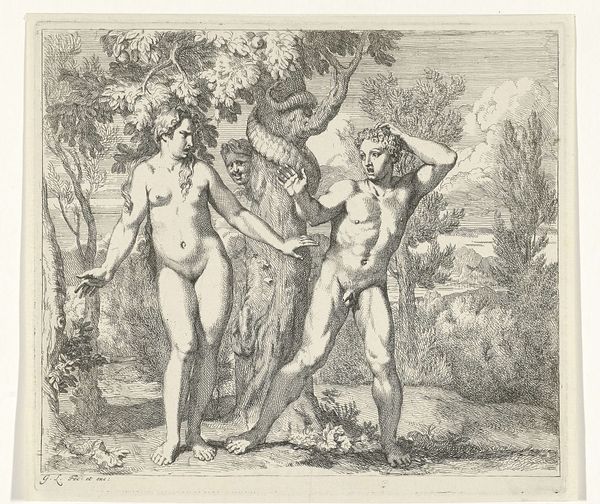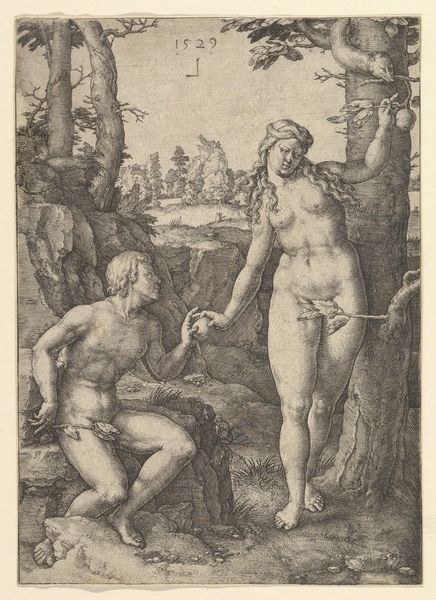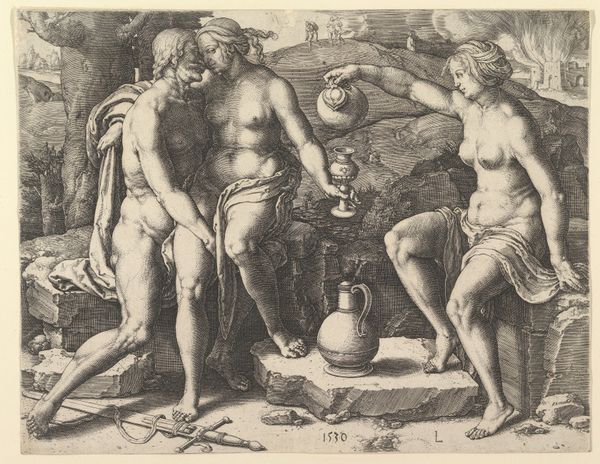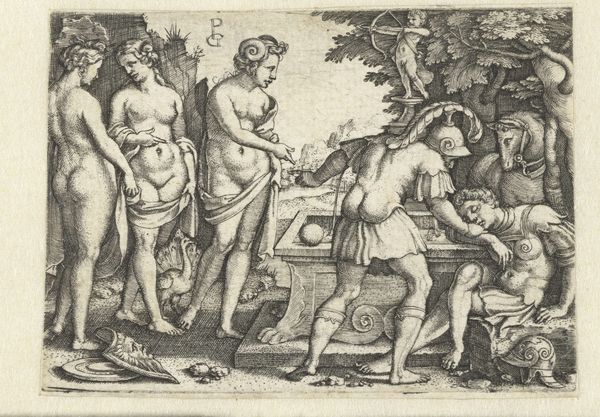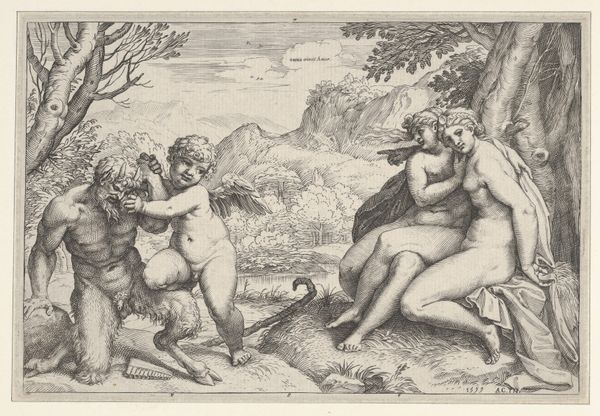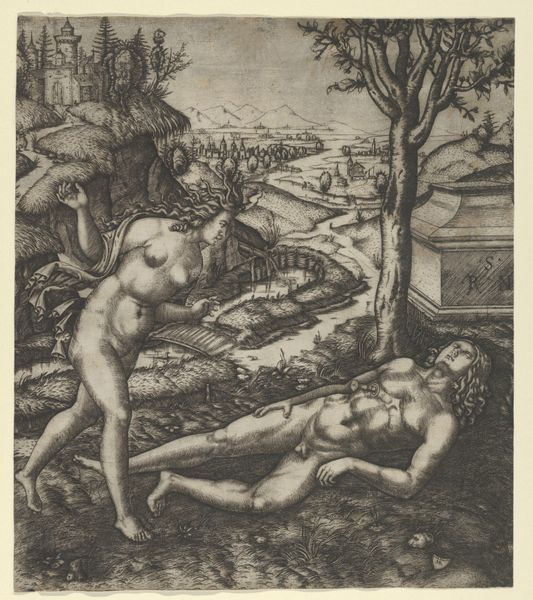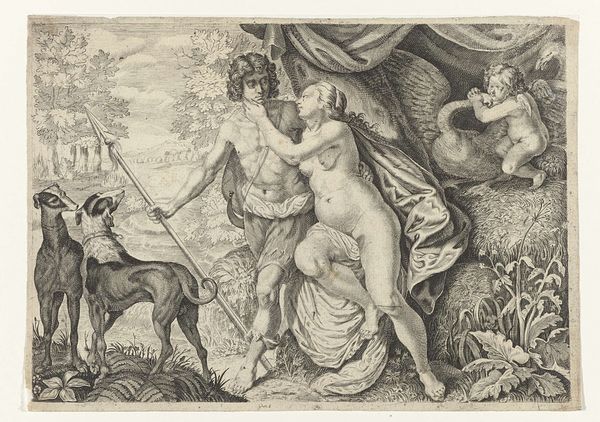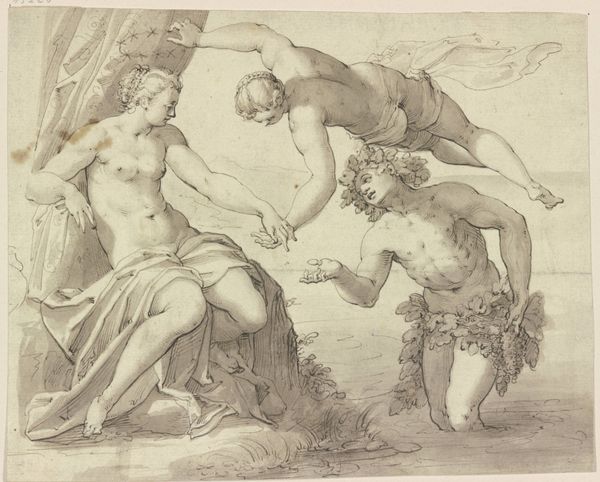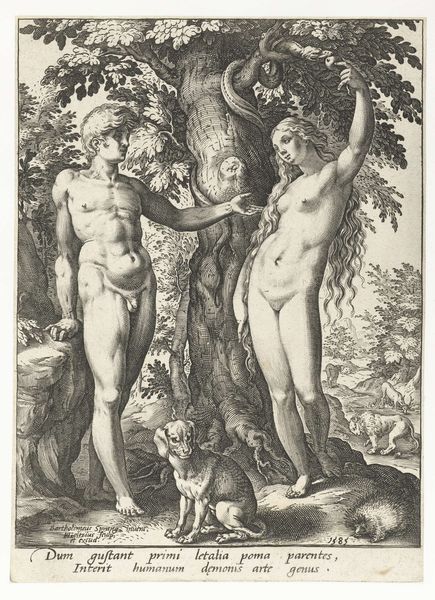
drawing, print, engraving
#
drawing
# print
#
landscape
#
figuration
#
form
#
female-nude
#
history-painting
#
northern-renaissance
#
nude
#
engraving
#
male-nude
Copyright: Public Domain
Curator: This engraving, "Fall of Man," by Lucas van Leyden, was created around 1530. It's currently housed at the Metropolitan Museum of Art. Editor: The immediate feeling is one of stillness. The landscape, while detailed, seems to hold its breath. It's as if everything is poised, waiting for something inevitable to happen. The contrast between the light figures and the dense trees amplifies this tension. Curator: Considering van Leyden's training in the workshop traditions, one cannot overlook the sheer skill involved in manipulating the engraving tools to achieve such fine lines and textures. Look at the details in the foliage versus the smooth planes of Adam and Eve's bodies— the printmaking process elevates a narrative to art. Editor: Precisely! It’s not just the technical skill, it is about seeing the biblical story from a decidedly Northern Renaissance lens. Adam lounges in repose, utterly devoid of agency while Eve plucks the apple. Curator: The consumption of this image by its 16th-century audience certainly also reveals the role of religious didacticism and perhaps served as a warning on human folly. One has to appreciate how these printed images enabled a wider distribution of these morals compared to painted altar pieces in Churches. Editor: I see the artist commenting, whether consciously or not, on issues of free will and divine mandate but more precisely, the construction of guilt around the female body, wouldn't you say? The gaze and her supposed inherent corruptibility, perpetuated even to this day. Curator: Interesting point, how labor and availability create a conversation of image versus social reflection. Editor: Ultimately, this work encapsulates a pivotal moment steeped in patriarchy, theological implications and artistic excellence and remains a potent symbol centuries later. Curator: Yes, it is also a testimony to the power of accessible mediums in shaping cultural narratives.
Comments
No comments
Be the first to comment and join the conversation on the ultimate creative platform.
